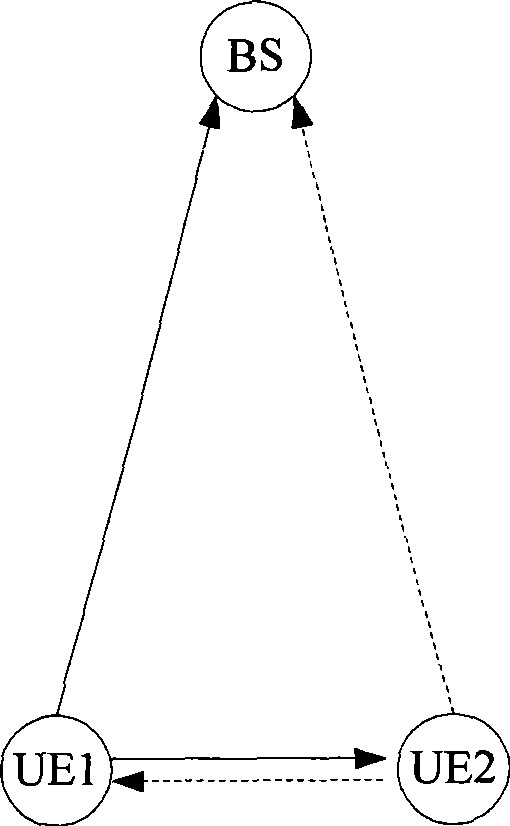User collaboration method with joint network coding and channel coding
A technology of channel coding and joint network, which is applied in the field of user cooperation of joint network coding and channel coding, which can solve the problems of reducing efficiency and achieve the effect of reducing end-to-end delay and improving transmission efficiency
- Summary
- Abstract
- Description
- Claims
- Application Information
AI Technical Summary
Problems solved by technology
Method used
Image
Examples
Embodiment 1
[0052] The present invention discloses a user cooperation method combining network coding and channel coding. The user has at least one partner user; each user concatenates its own information and the information of each partner user together to form a longer information sequence ; Perform channel coding on the sequence and broadcast the coded data, thereby realizing network coding; the base station obtains user information through joint iterative decoding according to the original data broadcast by the user and the data after joint network-channel coding.
[0053] The data of the user and its partner users are divided into several data blocks. The number of the cooperating users may be one or more, and this embodiment uses one as an example for introduction.
[0054] see Figure 4 to Figure 6 , users UE1 and UE2 are partner users, and the specific steps of the present invention are as follows:
[0055] 1. In the initial stage, UE1 performs channel coding on its own informat...
Embodiment 2
[0062]In this embodiment, the method for obtaining a data block among the user and each partner user includes the following steps:
[0063] Step A. In the first stage, each user broadcasts its own data, the base station receives the data of each user, and the partner users respectively receive the data transmitted by the user.
[0064] Step B, the user UE(i) has n partner users; the user UE(i) decodes and decodes the information sequence of each partner user, and UE(i) concatenates the information bits of each partner user with its own information bits Obtain an information sequence of n+1 times the length; the concatenated information sequence is sent to the channel encoder, and the check bits obtained after encoding will be punctured according to the length that the resource block can accommodate, and the punctured check bits Denote it as P.
[0065] Step C. In the second stage, the user parity bits P are forwarded simultaneously by means of space-time coding for reception ...
Embodiment 3
[0074] Embodiment three - two embodiment comparisons
[0075] The parameters of the link simulation performed according to the above two embodiments are shown in Table 1.
[0076]
[0077]
[0078] Table 1. Simulation parameters1
[0079] For simulation results see Figure 9 ,Depend on Figure 9 It can be seen that the scheme proposed by the present invention has higher spectral efficiency than the traditional scheme in the area of high signal-to-noise ratio. The delay comparison of the above schemes is shown in Table 2 (the delay of hybrid automatic repeat request (HARQ) is not considered):
[0080]
Traditional Coding Collaboration traditional space-time coding
cooperation Joint Network-Channel Coding
Collaboration (Option 1) Joint Network-Channel Coding
Space-time cooperation (Option 2) Each packet transmits
number of time slots required 1.5 1.5 1 1.25
[0081] Table 2. Latency comparison of various schemes
[0082] I...
PUM
 Login to View More
Login to View More Abstract
Description
Claims
Application Information
 Login to View More
Login to View More - R&D
- Intellectual Property
- Life Sciences
- Materials
- Tech Scout
- Unparalleled Data Quality
- Higher Quality Content
- 60% Fewer Hallucinations
Browse by: Latest US Patents, China's latest patents, Technical Efficacy Thesaurus, Application Domain, Technology Topic, Popular Technical Reports.
© 2025 PatSnap. All rights reserved.Legal|Privacy policy|Modern Slavery Act Transparency Statement|Sitemap|About US| Contact US: help@patsnap.com



